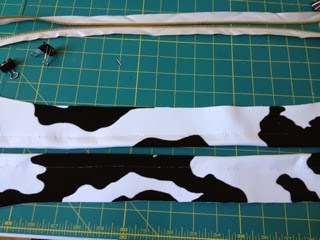 |
| This delightful sewing box can be yours for 29 pounds, and found at: Elephant In My Handbag. |
This is MY holiday wishlist. I don't really care about yours.
Did I just turn into an eight-year-old girl all over again? If I look in the mirror long enough, I'm sure I'll find her tucked away in some corner playing dress-up with a doll. Nope, it's not a dollhouse you see here. It's actually a sewing box. Wouldn't this be a great gift for that sewist-little-girl (or big girl)? YES...this would be a great gift for ME. Okay...too childish for me? How about something more nostalgic like a cookie tin with handles? Don't give it to me empty silly...stuff it with lovely embroidery thread and these delectable needles from Bohin. (You can purchase some of the Bohin hand needles on Amazon too.)
 |
| Find this at Elephant In My Handbag HERE |
Back to the sewing box. I actually saw this on Tilly and Button, and Elephant In My HandBag is one of the contest sponsors. I poked around their site, and found all sorts of fun sewing gifts. I mean really, really adorable things. My favorite are their kits. Don't you want to make a lamp, but didn't know how or have the time to collect all the supplies? Don't fear! Here's a kit for your crafting pleasure...
 |
| Lampshade kits and shade choices HERE. |
 |
| This doll is so popular, it is currently out-of-stock. But write them and see when they are getting the next shipment HERE. |
If you missed the Craftsy class sale that ended yesterday, I'm sorry. They were selling all their classes for $19.99. I splurged. I bought many, and really not enough at the same time considering all the classes that are still sitting in my WishList. But I have a sneaky feeling that the sale is going to come back around before the year ends, so keep your eyes peeled to your mail from Craftsy. In the meantime, there are some pretty fun things going on over there, and I recently picked up some yarn to match the sweater class that I bought (YESTERDAY). Craftsy also has a few kits to consider, and well, compared to some of the US kits out there, I think theirs are pretty darn nice. You know how to get there...I don't need to give you the info right? Okay...here's a little link for ya to something nice HERE for a real little girl and not your imaginary one. For the knitters out there, here's a kit that I think is beautiful and maybe simple enough for even me to tackle HERE.
My husband doesn't like to second guess on gifts. When he was in China, he called me from his phone to video conference me in to look at some fabrics from a local silk shop. But one type of fail-proof gift are Japanese imported textiles. Particularly from Echino and Kokka. Just make sure you get me at least four yards from any of the print selections HERE at Hart's Fabrics.
 |
| You can order this print from this Etsy store HERE in HALF YARD increments, but it's cheaper at Hart's Fabric. |
 |
| Available on Etsy HERE in HALF yard increments, and at Hart's Fabric. (Cheaper at Hart's) |
 |
| SewEzi Portable Sewing Table. $249.00 Get one HERE. |
Another drawback is the lack of tables available for sergers. An overlooked need for home machines. Ever use your serger and wish there was just more space? I do...all the time. The best I can find are extension tables. I am probably not waiting for this one because it's on sale right now at Sewing Machine Plus for $79.00. There's free ground shipping for orders totaling more than $49.
 |
| Picture from Sewing Machine Plus. Get the insert HERE. |
 |
| More information about Brother's new Dreamweaver XE machine HERE. |
Thanks Santa in advance for my gifts! Happy holidays everyone!












































